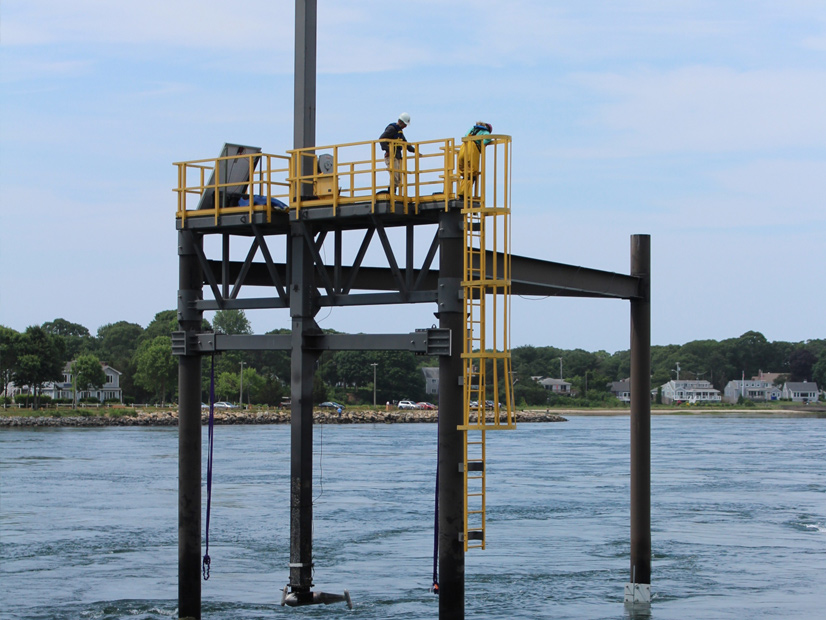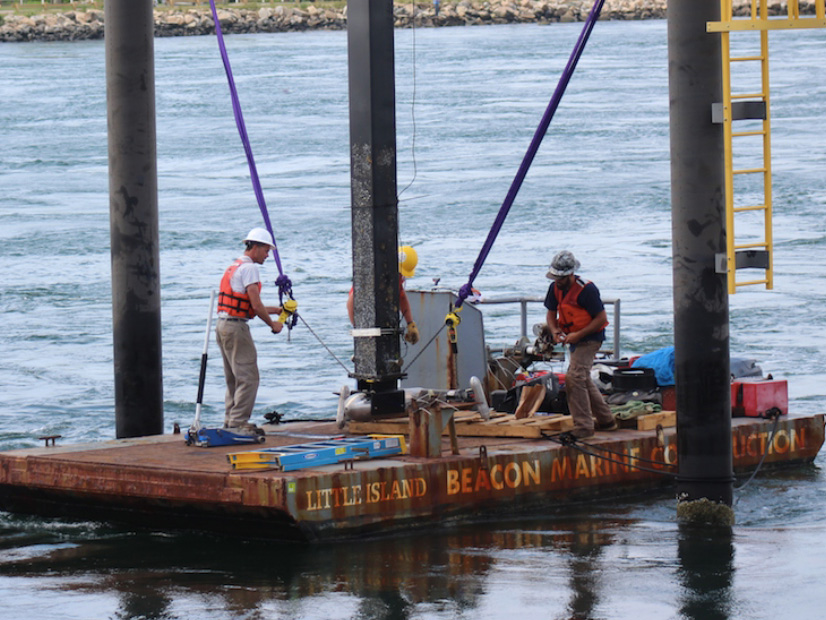Researchers from the New England Marine Renewable Energy Collaborative (MRECo) tested how tidal turbines affect the environment around them in the Cape Cod Canal last week.
The team used a camera and acoustic system to assess how a small steel turbine would impact water conditions, as well as fish and other wildlife, in the Bourne Tidal Test site for 48 hours.
A tidal turbine works like a wind turbine, using heavy blades to turn a rotor that powers a generator. They are placed on the sea floor, or at the bottom of an estuary or a river with a strong tidal flow.
The 2-meter turbine prototype was built by Littoral Power Systems, based in New Bedford, Mass.
One of the primary benefits of tidal energy is the predictability of tides, according to John Miller, executive director of MRECo.
“We’ve been predicting tide patterns for centuries,” Miller said.
Additionally, the demonstration on the Cape Cod Canal on the southern coast of Massachusetts found virtually “no environmental impact,” he said. Other studies in Canada and Scotland have had similar results, showing that fish and other ocean wildlife have evolved to avoid the slow-moving blades, Miller added.
The steel turbines need to be fixed to the seabed, which has raised some concern that a large-scale tidal turbine infrastructure could disrupt water flow enough to change sediment flow. Building and maintaining them is a major hurdle to adopting the renewable energy technology, Littoral CEO David Duquette said.
The European Marine Energy Centre is advising Littoral on how to mitigate environmental issues that tidal turbine energy could cause.
Researchers also are investigating how to develop a propulsion mechanism that more closely mimics how animals have evolved to move in water, such as the motion of a whale’s tail going up and down.
Wind turbine blades mimic wings, and “you don’t see wings in the water,” Miller said.
But the cost of testing these technologies is high.
MRECo, which spun off as a nonprofit from the University of Massachusetts research center, established the Bourne Tidal Test Site in 2018 to avoid some of those costs.

The demonstration last week was funded by the Massachusetts Seaport Economic Council at a total cost of $400,000. With a designated testing site already at their disposal, the energy collaborative has a much lower testing cost than other researchers. Developing a testing site alone can cost up to $1 million, Miller said.
Previous tidal turbine testing in both the Northeast and Europe went from a university tank to a real-world test of turbine systems 30 to 40 feet in diameter, Miller said. Those large sites typically have a water velocity of 6 knots, equivalent to a 400-mph wind, he added.
“That’s like testing a wind turbine in a hurricane,” he said.
Tidal turbine blades have flown off some tests because the system was not tested at an interim level. The Cape Cod Canal, which runs at about 4 knots, allows researchers to develop the technology at lower speed, increasing the number of places the technology could be deployed, Miller said.
Some of the first large-scale tidal turbines in countries like Canada and Scotland have a diameter of 40 feet and a generating capacity of 1 MW.
But the Ocean Renewable Power Co. is planning to install a utility-scale tidal energy project in the Cook Inlet in Alaska that with a generating capacity of 5 MW. And in Scotland, Simec Atlantic Energy is now planning a tidal power project with a proposed generating capacity of 398 MW.
“We are just getting our toes wet in the U.S.,” Duquette said.
The site in Cape Cod also serves as a place for other companies to test underwater sensors. OpenCape, which provides fiber optics for Cape Cod and southeast Massachusetts, is working with the energy collaborative to install broadband on the test site platform.
Now, the nonprofit is focusing on adding power to the platform, which would also allow the tidal turbines to supply energy to the grid eventually.


